Zwarte Piet (Black Pete) updated
The last time I wrote about Holland’s peculiar Zwarte Piet (Black Piet) tradition was five years ago. I think it’s time for an update.
Sinterklaas is both a person and a holiday. On December 5th each year (the holiday), Sinterklaas (the person) brings gifts to children at their houses much like Santa Claus does in the US at Christmas.
Sinterklaas is tall and thin and wears red robes and a bishop’s hat. He’s less jolly than Santa Claus, and rides a white horse rather than driving a sleigh. Rather than living at the North Pole, where it’s cold, he lives in, of all places, Spain. He arrives in the Netherlands a few weeks before Sinterklaas (the holiday), traveling here by, of all things, steamboat.
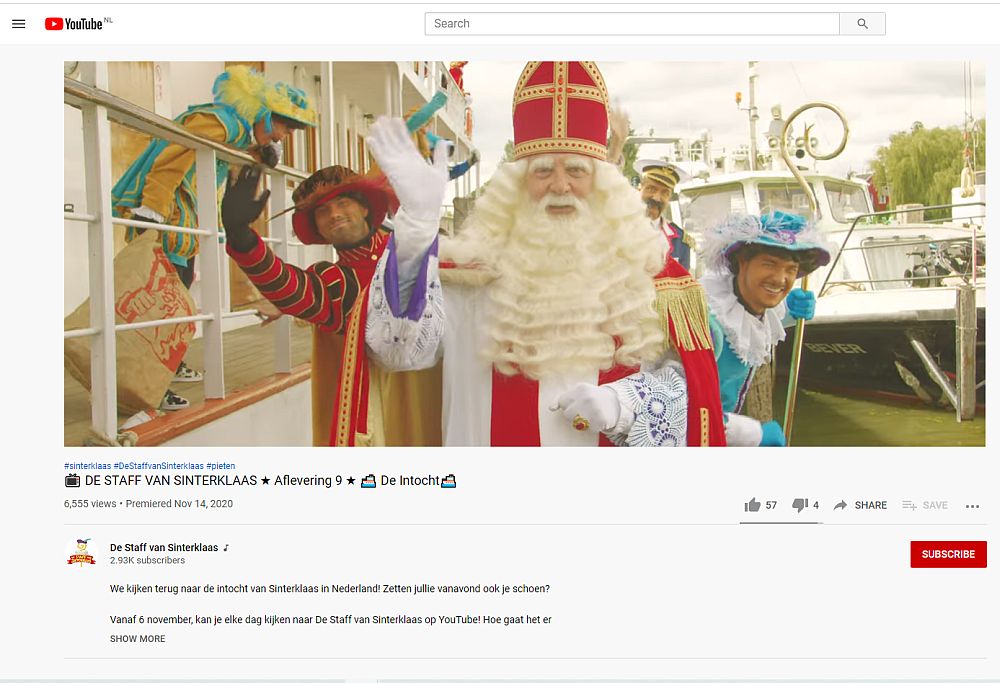
Despite their differences, both characters are derived from St. Nicholas. While in the US Santa Claus has become entwined with Christmas, here in Holland the two are separate. On Sinterklaas the children receive their presents. On Christmas, they might have a tree in their house, but without gifts under it. They might go to church or have a big family meal together.
The evening of December 5, Sinterklaas visits the houses of children all over the Netherlands, landing on their roofs with his horse and delivering presents.
None of this is controversial so far. The problem is Sinterklaas’s helpers: the ones who deliver the packages down chimneys.
Instead of elves, Sinterklaas has Zwarte Piets.
Zwarte Piet in the past
Zwarte Piet, which means “Black Pete,” is a man or woman dressed in a brightly-colored Moorish outfit with puff sleeves and black tights and gloves. He is black, with thick red lips, curly black hair, gold earrings and a beret with a feather.
When I say “black,” I mean it is usually a white person dressed in blackface, with every inch of visible skin covered in black greasepaint.
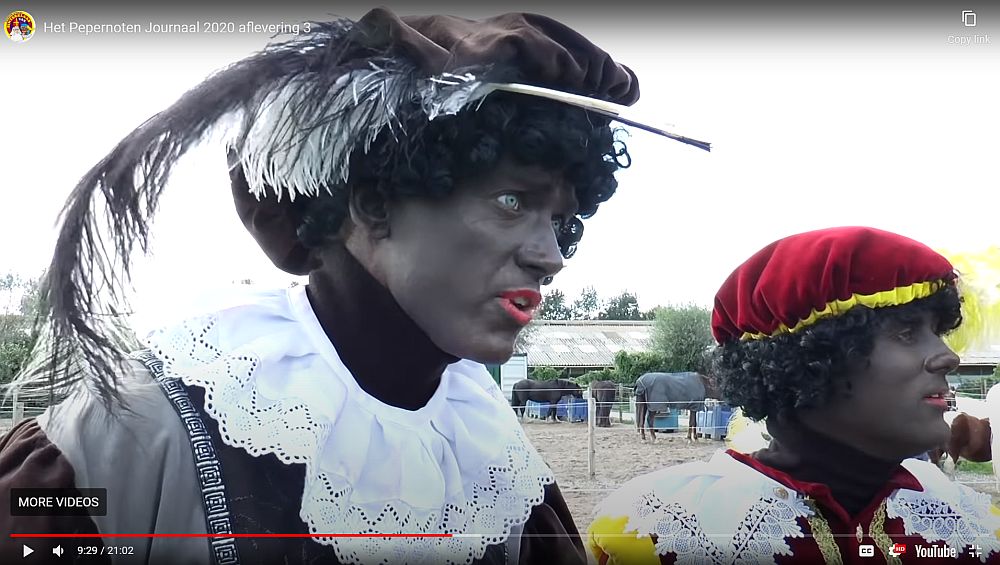
Everywhere Sinterklaas goes, he is accompanied by his Black Petes, who prance about, throwing candy to children and generally playing the clown.
You can see, I hope, why this has become controversial in recent years.
I first wrote about Zwarte Piet back in 2013, after speaking with lots of Dutch people who almost universally defended Zwarte Piet whenever I expressed my objections. In that article, I listed my responses to each of the usual arguments. I still get comments, sometimes quite nasty, on that post, making the same tired points.
Change begins
In 2014 things began to change. A group called “Kick Out Zwarte Piet” formed and began to agitate for change.
The first Roetenpieten, which translates as Sooty Petes, appeared that year. These are Petes that don’t have their skin painted black. Instead, they wear smears of black to look like they’ve been down a chimney delivering gifts to children. Still, most Petes conformed to the standard racially stereotyped look.
Some towns over the next few years began a gradual shift to Sooty Petes. First they dropped the earrings, then softened the black paint to brown, lost the red lips, but kept the curly wigs.
Every step of the way was met with resistance. One of the better-known incidents was in 2017, when a group of anti-Pete activists were traveling by bus to the town in Friesland province where Sinterklaas was due to arrive. They planned to stage a protest there. Pro-Pete demonstrators blocked the highway, preventing them from reaching their destination.
Zwarte Piet now – the good news
Things are changing. In some places, Black Pete has been entirely replaced by Schoorsteenpiet (Chimney Piet) or Roetveegpiet (Sooty Pete). Many of the Sooty Petes don’t wear a wig now, or in any case it’s not curly black hair. The gold earrings are gone, as is the lipstick. They still wear the bright costumes.
At Sinterklaas’s arrival (taking place in a secret, fictional town this year in order not to attract crowds), none of the Petes were black; they were all Sooty Petes.
On the Sinterklaasjournal – a daily “news” show made for children about Sinterklaas and his Petes and their adventures leading up to December 5 – the Petes, for the first time, are all sooty this year.
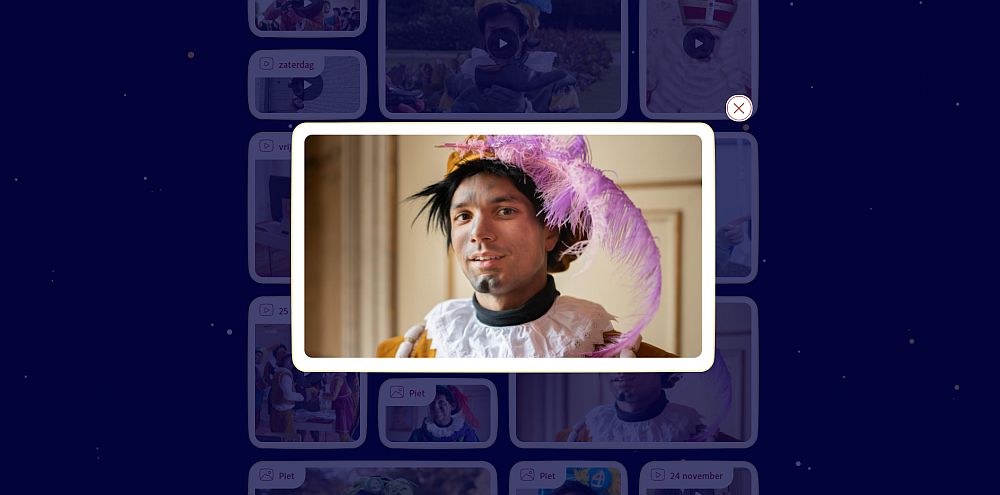
An alternative version of the Sinterklaasjournal, called De Staff van Sinterklaas, has Petes with other titles: Groentepiet (Vegetable Pete), Illusionpiet (Magic Pete), Hoofdpiet (Chief Pete), Bakkerspiet (Baker Pete), Liedjespiet (Song Pete) and so on. They’re all just wearing their natural skin color without soot or wigs.
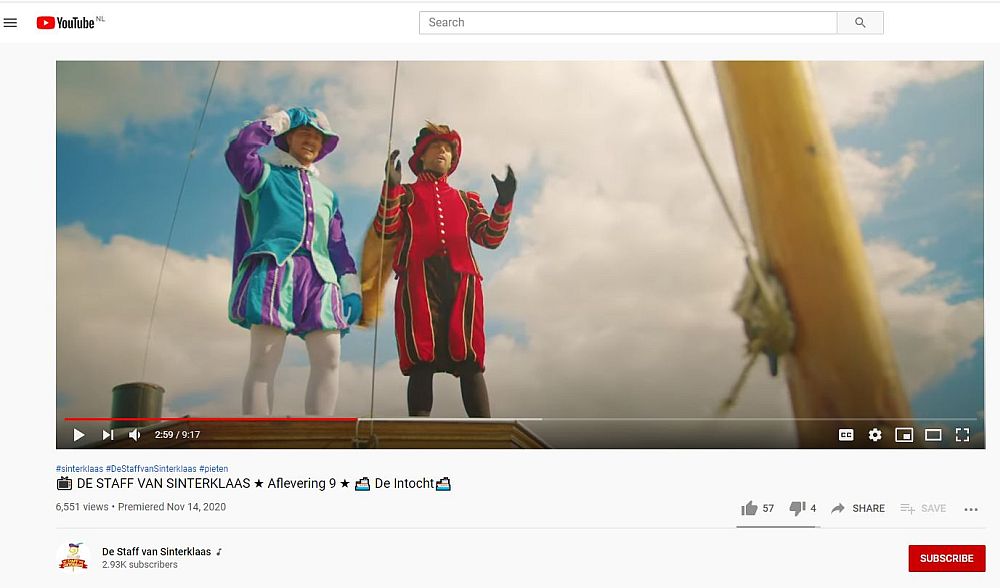
Packaging and wrapping paper with images of Black Pete have all but disappeared. So have images of Black Pete in commercials and ads.
Zwarte Piet now – the bad news
Resistance to change continues.
Some towns are offering an alternative to the nationally-broadcast Sinterklaasjournal, using Black Petes exclusively. The afro wigs, bright red lips and gold earrings are back. Parents who resist the shift to Sooty or white Petes can instead show the local version to their children.
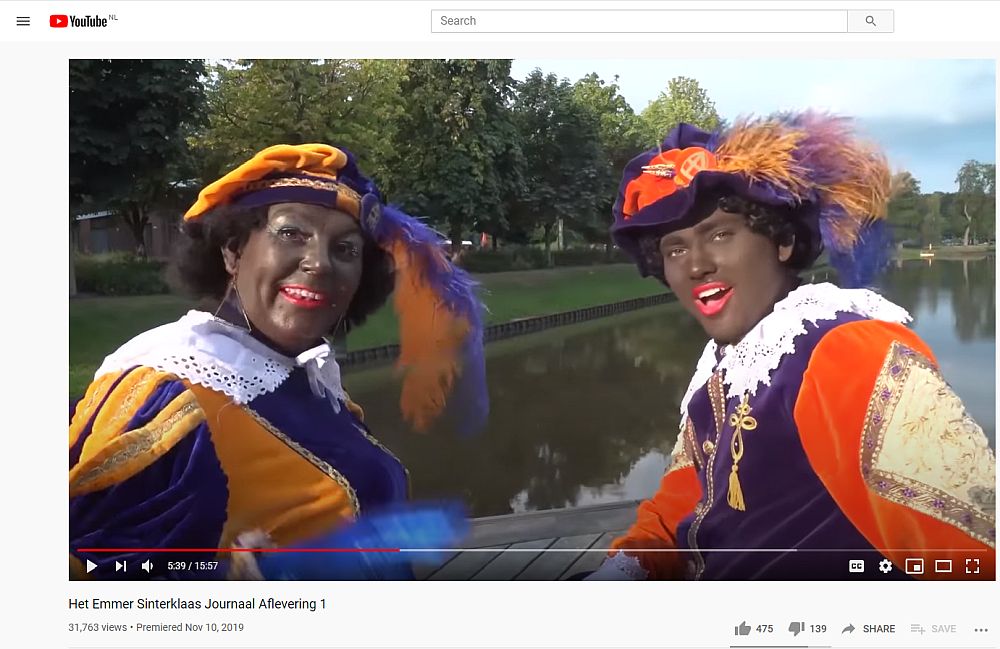
Other towns have chosen what they see as a compromise: Grey Petes. Painted with gray greasepaint instead of black, they often retain the afro wig and thick red lipstick.
The protest organization Kick Out Zwarte Piet condemns these as “blackface light,” a fictional skin color that still refers to a racist stereotype.
General attitudes about Black Pete
When I first brought this up with Dutch people, starting about 20 years ago, I only remember actually convincing one single person, a colleague and friend, that Zwarte Piet is a racist image and must stop.
This may just be proof of my poor skills at persuasion. I don’t know. I saw it as Dutch people digging in their heels because, I figured, if they admitted that the tradition of Zwarte Piet is racist, that would mean they were racist. That’s not something anyone wants to admit.
Nowadays, it’s stopped even being a discussion. Most people I know either a) admit it is racist or b) still refuse to see it as racist but understand that others see it that way. They therefore accept that the tradition will inevitably change.
One of the arguments I used to get was “You foreigners want to stop our traditions because of what it means to you. But it doesn’t mean the same thing to us. It’s our tradition.” I think that all but the most ardent Black Pete defenders are beginning to see that the tradition doesn’t get ruined if the Petes are white or smeared with soot. It just shifts a tiny bit. And the kids enjoy it just as much.
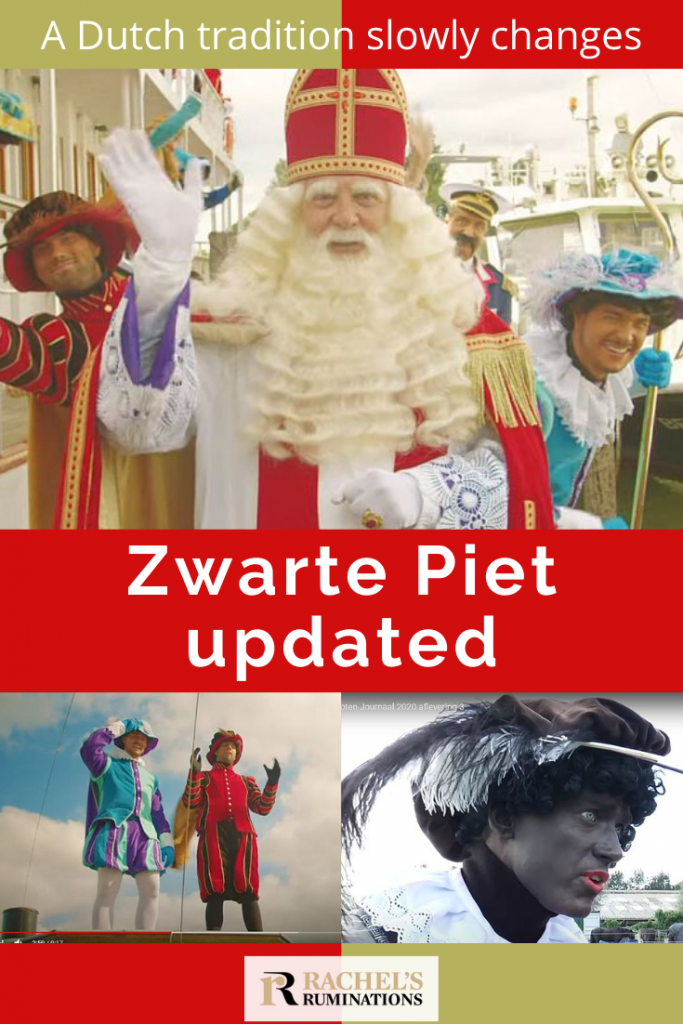




Thank you so much Rachel for writing this. It is the most comprehensive article on Zwarte Piet I read until now. It helps the reader put the practice in context and appreciate the changes that have been taking place, despite how slow and exasperating the process was.